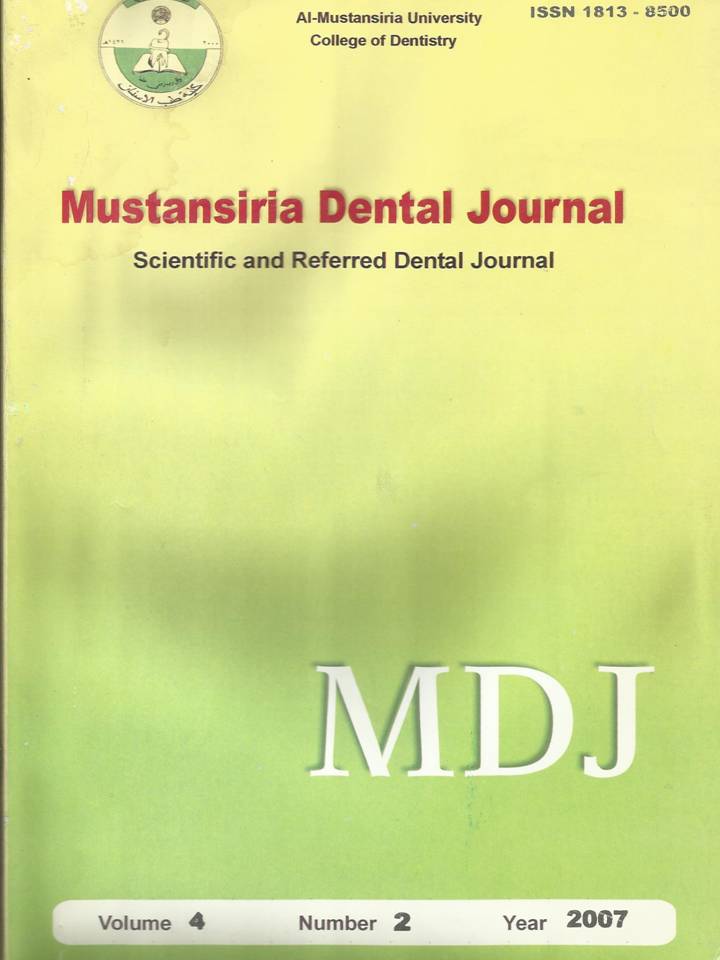Gingival recession at dental college hospital Al- Mustansiriya University; prevalence and effect of some associated factors
DOI:
https://doi.org/10.32828/mdj.v4i2.593Keywords:
Key words: Gingival recession prevalence, Dental attendance, Tooth brushing.Abstract
The present study was conducted to investigate the occurrence of gingival recession in adults by age and gender in relation to their dental clinic attendance and frequency of tooth brushing. The sample of the study included adult subjects aged (30-69) years who attended Al-Mustansiriya dental college hospital seeking for different types of treatment. A total of (745) dentate subjects (390 males 52.3%) and (355 females 47.6%) were involved in the study. According to age, the sample was divided into four age groups (30-39, 40-49, 50-59 and 60-69). The study revealed that (57.18%) of the total subjects had at least one tooth surface with gingival recession. Recession was found in (63.07%) of males, and decreased significantly in females to (50.7%). The study showed that mean number of teeth with gingival recession per person for males was (7.7) teeth and (5.72) teeth for females. The mean number of teeth with gingival recession per person was (2.05) teeth for age group (30-39) years and increased significantly to (12.48) teeth for age group (50-59). The study also demonstrated that mean number of surfaces with gingival recession per person was (7.22) for age group (30-39) years and increased significantly with age to (30.14) teeth for age group (50-59) years. The total males reported higher mean surfaces than females (19.91) and (15.32) respectively. The results of the study revealed that the frequency of tooth brushing has a positive effect on the prevalence of gingival recession; while regarding the relation of dental clinic attendance, the subjects who attend the dental clinics regularly and irregularly had similar occurrence of gingival recession.
Downloads
Published
Issue
Section
License
The Journal of Mustansiria Dental Journal is an open-access journal that all contents are free of charge. Articles of this journal are licensed under the terms of the Creative Commons Attribution International Public License CC-BY 4.0 (https://creativecommons.org/licenses/by/4.0/legalcode) that licensees are unrestrictly allowed to search, download, share, distribute, print, or link to the full texts of the articles, crawl them for indexing and reproduce any medium of the articles provided that they give the author(s) proper credits (citation). The journal allows the author(s) to retain the copyright of their published article.
Creative Commons-Attribution (BY)









